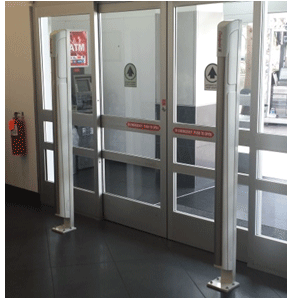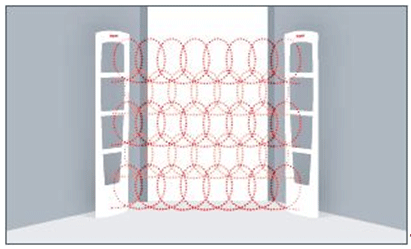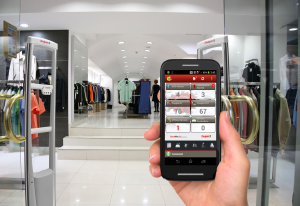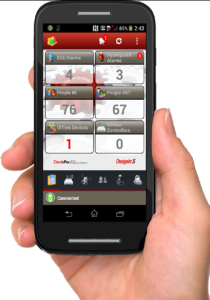 Often overlooked for small businesses is the dire need for a suitable burglar alarm system. I talk about EAS placement and CCTV all the time. Those are rendered absolutely useless is someone busts in through the back door. If your burglar system isn’t up to standards, you run the risk of losing everything.
Often overlooked for small businesses is the dire need for a suitable burglar alarm system. I talk about EAS placement and CCTV all the time. Those are rendered absolutely useless is someone busts in through the back door. If your burglar system isn’t up to standards, you run the risk of losing everything.
I think (and hope) that all of you have at least a basic intruder alarm system set up with a reputable monitoring service. I want to go a little further than that and give you some insight on what I’ve seen that works and what really doesn’t. I’ve seen plenty systems over the course of my career and while I’m not an expert on alarm systems, I have common sense (something that seems to be lacking the higher you progress on the retail ladder).
Every store, no matter the size should at the minimum have motion detection and depending on your assortment, shock sensors. If you’re not familiar with the latter, they are generally designed for placement on solid walls (think a firearms cage in a sporting goods store, or the cement wall surrounding the vault at the local bank). These alarms trigger if there is a significant shockwave, i.e explosion, or perhaps a vehicle ramming through. Very important to consider depending on your particular assortment and layout. Motion sensors on the other hand are far more common and should definitely be part of your security system. As the name implies, they detect motion.
One thing my company struggled with for years was false alarms. We were actually paying thousands of dollars in false alarm fines to our local police department one year at this one particular store. Almost every night, the motion sensor would trip, police would be dispatched and we’d find no evidence of a breach. We eventually discovered that we had a cat that was taking up residence and wandering the aisle at night. We eventually changed the trigger to dispatch police from one motion activation to no less than 4 before we would dispatch police. This helped out tremendously and we’ve since implemented that practice to all of our stores.
One other thing we found that didn’t quite work with the motion sensors was our outdoor storage yards. If the wind blew a little too hard, or if animals would slip in, they would trigger a police dispatch. What we did was configure the dispatch to only trigger if there was an outside motion trigger coupled with a breach of gate. By a little trial and error, we found the best solution to keep our store protected, all while eliminating any false alarms to our local police department.
Usually attached to any burglary alarm system is the fire alarm system. I bring this up as I want to talk about a technology that we’ve just begun implementing in our stores over the past 6 months that I think is definitely worth the investment. That being delayed egress fire exits. We had stores in this one market that were being just absolutely hammered with fire exit run outs. We had groups of people that would load up shopping carts full of buggies and push out of the fire exits where an idling pickup truck is waiting. We struggled to stop this trend and were hit with a brick wall; until we tested out the delayed egress.
If you’ve never seen these in action before, they’re pretty awesome. What happens is pretty simple. If someone attempts to open a fire exit, the door has a 10 second delay; meaning the alarm sounds, but the door cannot be physically opened for that time period. The only way this is circumvented is if the fire alarm is activated; then the door opens immediately. The first time our fire exit bandits hit a store with the new doors was priceless. The look of sheer terror and panic on their face as they tried to get out the store, but couldn’t was pure awesomeness. This install, while an investment, has already shown to have not only great potential, but has already given us results.
As with any system, there isn’t a “one size fits all” plan. I encourage everyone to do their own homework when it comes to protecting your store when you’re not there. I guarantee that you can find a balance between your store needs and your budget. While with any new system, there is always an investment to be made, think of this as an investment that you can’t afford not to take.



 Tagged merchandise, metal racks, and electrical wiring in this incidental detection zone can have an adverse effect on system performance. As a general rule, tagged merchandise should be equivalent of at least ¾ of you doorway aisle width away from each EAS pedestal. Example; tags should be no closer than 4.5 feet, in a 6 foot doorway. Where possible: metal racks and electrical wiring should be 5 feet or more away from the system.
Tagged merchandise, metal racks, and electrical wiring in this incidental detection zone can have an adverse effect on system performance. As a general rule, tagged merchandise should be equivalent of at least ¾ of you doorway aisle width away from each EAS pedestal. Example; tags should be no closer than 4.5 feet, in a 6 foot doorway. Where possible: metal racks and electrical wiring should be 5 feet or more away from the system.
 You’ve got a great EAS system. You’re stopping shrink and keeping profits in your store. You’re happy. Losses are down and you might actually make your sales targets. So it’s like Ronco Rotisserie where you just “set it and forget it,” right? Not quite. You have a few things to do if you want that system to provide you years and years of a return on investment.
You’ve got a great EAS system. You’re stopping shrink and keeping profits in your store. You’re happy. Losses are down and you might actually make your sales targets. So it’s like Ronco Rotisserie where you just “set it and forget it,” right? Not quite. You have a few things to do if you want that system to provide you years and years of a return on investment. In the past when managers discussed employee theft they mostly talked about the tangibles. They talked about their problems with staff stealing product, supplies and money – the physical things which can be touched and seen.
In the past when managers discussed employee theft they mostly talked about the tangibles. They talked about their problems with staff stealing product, supplies and money – the physical things which can be touched and seen.

 Burnout is an on-going, serious issue in the retail industry. The industry is so immense and pervasive that all of us, even if we’ve never working in retail, have knowledge of and experience with the problem.
Burnout is an on-going, serious issue in the retail industry. The industry is so immense and pervasive that all of us, even if we’ve never working in retail, have knowledge of and experience with the problem. The cost of cyber security for retailers seems to double year after year. The cost of a data breach in this country in 2014 cost the retailer an average of
The cost of cyber security for retailers seems to double year after year. The cost of a data breach in this country in 2014 cost the retailer an average of